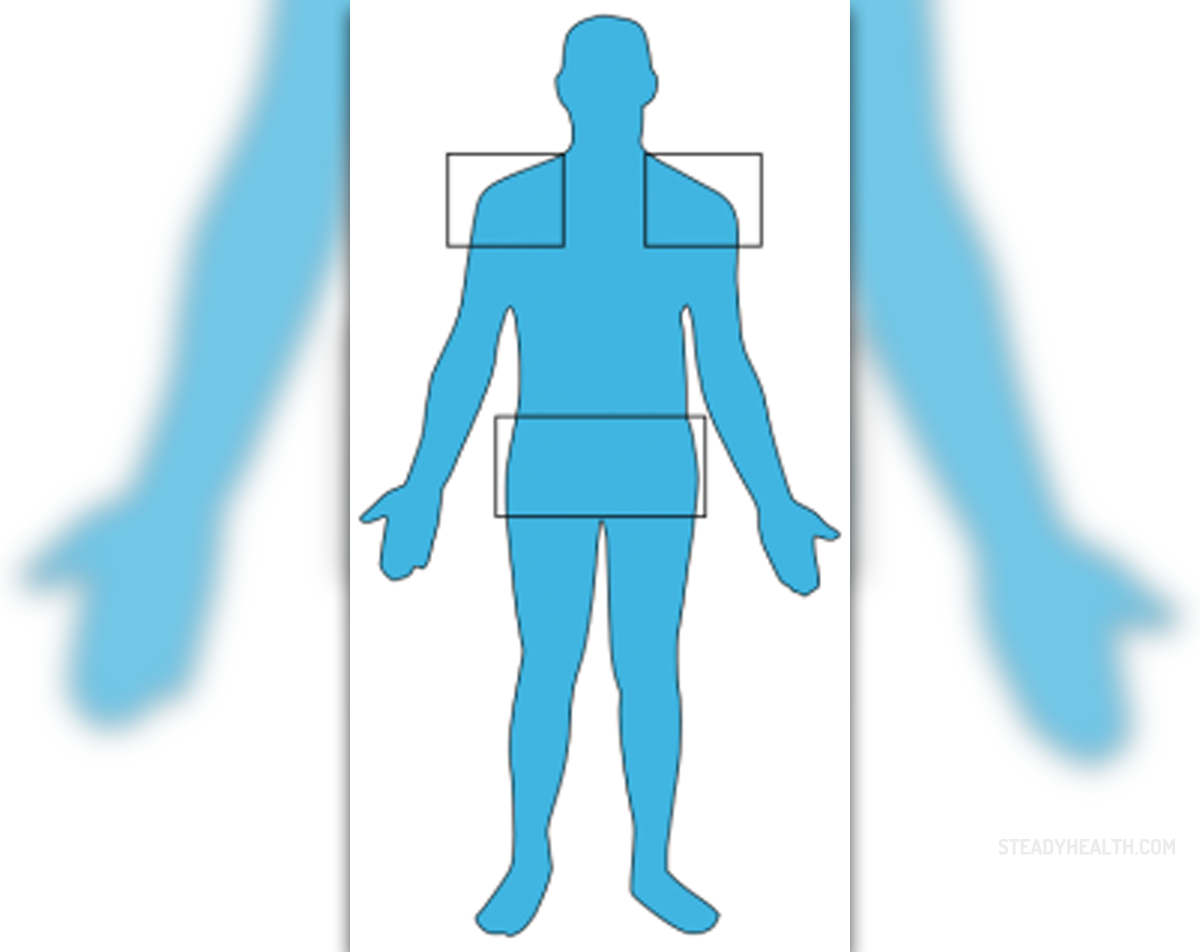
Most patients are people over 65 years of age and this condition is very rarely seen to affect anyone younger than 50. Polymyalgia rheumatica is often seen combined with giant cell arthritis. This is another inflammatory disorder, known to cause headaches, vision problems, pain in the jaw and some other signs and symptoms.
Polymyalgia Rheumatica Symptoms
In general, people suffering from this condition may experience low grade fever, malaise, fatigue and also loss of appetite and unexpected weight loss. Some patients may also suffer from depression caused by this condition. More specific signs and symptoms of polymyalgia are aches and pains throughout the body, especially in the shoulders, neck, lower back, buttocks, and hips or thighs. These areas of the body may also feel very stiff in the morning or after some long car ride and you may not be able to perform different movements using these parts of the body. Tenderness of the upper arms and stiffness and pain in the knees or wrists may also indicate polymyalgia rheumatica.
Make sure to visit your doctor if you happen to experience stiffness and aches for the first time. Also, consulting the doctor is a good idea, if the pain disturbs your daily life or sleep.Prevention and Therapy for Polymyalgia Rheumatica
There is no knowledge what causes polymyalgia rheumatica. Scientists assume that the disease is inherited and some theories include viral infections as contributing factors. Since no one knows what causes this disease, doctors may only recommend managing the symptoms of the condition.
Polymyalgia rheumatica patients are usually prescribed Prednisone or some other oral corticosteroid medication. In most cases, doctors will initially prescribe 10 to 20mg of corticosteroid per day, which should relieve the pain and stiffness in several days. These doses are usually sufficient for most patients and those people who do not seem to respond to corticosteroids probably do not have polymyalgia rheumatica.
Initial dose is increased after several weeks of treatment, depending on the results of some tests (sed rate and C-reactive protein tests). Corticosteroids are known to cause side effects and doctors will therefore try to give the lowest possible dose which works for the patient.
However, the treatment usually lasts for 2 to 3 years and it may cause side effects such as osteoporosis, hypertension, diabetes and high cholesterol. Because of that, patients must eat healthy and exercise regularly to minimize or prevent these adverse effects. Many doctors will recommend vitamin D and calcium supplements to prevent osteoporosis. Your doctor will monitor side effects of corticosteroids and recommend using some assistive devices or physical therapy, if necessary.












-vs-Trigger-Points-(Myofascial-Pain-Syndrome)_f_280x120.jpg)




Your thoughts on this
Loading...